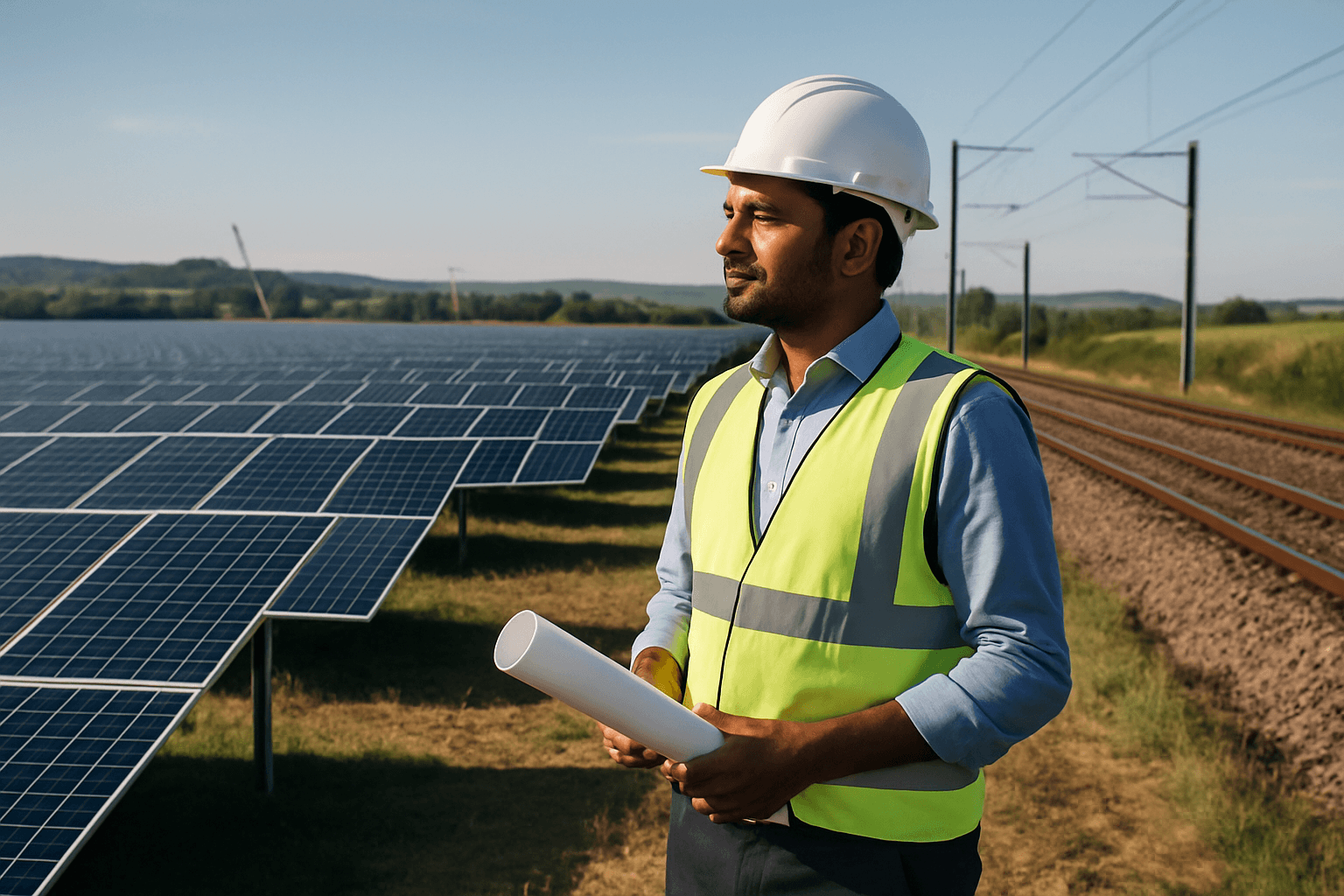Paris, France – France’s national railway company, SNCF, is significantly expanding its commitment to renewable energy, having recently finalized a series of major solar power purchase agreements (PPAs) and launched innovative pilot projects. These strategic moves underscore SNCF’s ambition to power its vast rail network with cleaner energy, aiming for substantial decarbonization by the end of the decade.
The new deals, alongside the establishment of its dedicated renewable energy subsidiary, SNCF Renouvelables, are set to dramatically increase the proportion of solar electricity powering French trains and railway infrastructure.
Major Solar Power Purchase Agreements Bolster Renewable Supply
SNCF Voyageurs, a key entity within the group, has secured several significant long-term corporate power purchase agreements (CPPAs) to directly source green electricity. These agreements are crucial steps towards its goal of having 20% of its electricity needs met by CPPAs and 40-50% from renewable sources by 2027-2028.
Partnership with Octopus Energy and BayWa r.e.
In a notable development, SNCF Energie, Octopus Energy’s generation arm, and BayWa r.e. announced the signing of two 25-year CPPAs in October 2025. These agreements will see over 100 GWh of green electricity supplied annually from the Greenberry and Fontenet 3 solar farms. This substantial output is projected to be enough to power approximately 15,500 TGV trips from Paris to Rennes each year. Alex Brierly, Co-head of Octopus Energy Generation, highlighted that these efforts contribute to putting SNCF’s trains on an even greener track.
Neoen Agreements to Deliver Significant Power
Further strengthening its renewable portfolio, SNCF Energie also signed four new long-term CPPAs with Neoen, a leading independent renewable power producer in France. Starting January 1, 2026, these 20-25 year agreements will provide SNCF Voyageurs with 137 GWh of renewable electricity annually from four solar parks: Romilly (42 MWp), Loirecopar (39 MWp), Champblanc (15 MWp), and Labouheyre (14 MWp). This capacity is equivalent to powering 11,000 high-speed train trips between Paris and Bordeaux each year. These latest deals build on a previous 139 MWp solar PPA signed with Neoen in June 2024. Once all Neoen parks are operational, the combined output will exceed 300 GWh per annum, accounting for 29% of SNCF Energie’s renewable electricity procurement under PPAs.
SNCF Renouvelables: Developing In-House Solar Capacity
Central to SNCF’s long-term green strategy is SNCF Renouvelables, a subsidiary launched in late 2023. This entity is tasked with transforming SNCF’s extensive real estate and land holdings into renewable energy production sites. The company, which is France’s largest industrial consumer of electricity and its second-largest landholder, aims to install 1,000 megawatts-peak (MWp) of photovoltaic capacity on 1,000 hectares of land by 2030. This ambitious target is expected to meet 15-20% of SNCF’s current electricity requirements. By the end of 2024, over 94 sites covering 633 hectares had been assessed, with 21 confirmed and 41 more undergoing feasibility studies.
Pioneering “Ferrovoltaics” with the Solveig Project
Beyond large-scale solar farms, SNCF is also exploring innovative ways to generate power directly from its railway infrastructure. In mid-January 2025, SNCF launched the “Solveig Project” at its Achères technical center near Paris. This pilot scheme, developed by SNCF subsidiary AREP, involves testing reversible solar panels installed directly on unused railway tracks, a concept dubbed “ferrovoltaics” or “solar tracks”.
The Solveig system is a mobile, container-based solar-plus-storage plant designed for rapid deployment without the need for permanent foundations. It utilizes lightweight solar panels mounted on wheels, leveraging the existing tracks as a foundation. The six-month trial will assess the performance and reliability of these panels, with the potential to unlock significant renewable energy from SNCF’s vast network of unused lines.
Broader Decarbonization Goals and Sustainable Mobility
These solar initiatives are integral to SNCF’s overarching sustainability strategy, which includes aggressive decarbonization targets. The company aims to reduce CO2 emissions from its transport operations by 30% and from its buildings by 50% by 2030, with a long-term goal of full decarbonization by 2050.
In addition to solar power, SNCF is diversifying its renewable energy mix with wind power purchase agreements, such as the one with Voltalia for the Rives Charentaises wind farm. The company is also actively developing solutions for rolling stock decarbonization, including hybrid trains that debuted in commercial service in 2024, and plans for battery and hydrogen-powered trains to be deployed by 2025-2026 for lines not fully electrified. Through these comprehensive efforts, SNCF is not only securing its energy supply against market volatility but also playing a pivotal role in France’s and Europe’s transition to a greener transportation future.

